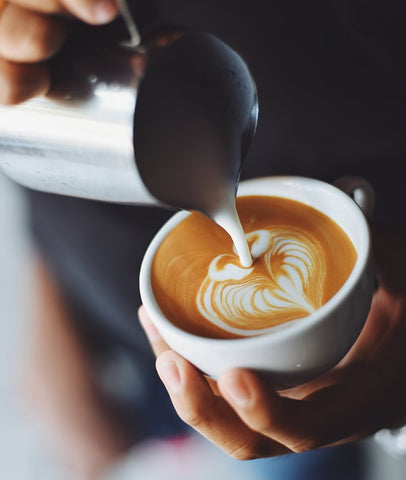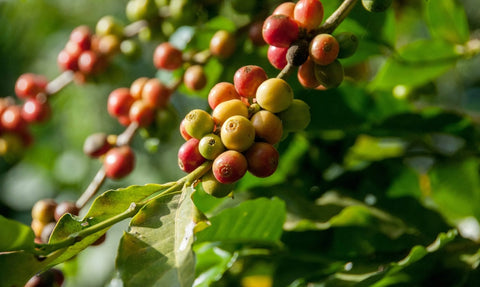Roasting coffee is a critical step in the coffee production process that transforms green coffee beans into the aromatic, flavorful beans used to brew coffee.
The importance of roasting coffee lies in several key aspects:
-
Flavor development: Roasting is where the complex flavors of coffee beans are developed. During the roasting process, various chemical reactions occur that create the distinctive flavors, aromas, and nuances found in coffee. The length and temperature of the roast can significantly impact the flavor profile, resulting in different taste profiles ranging from light and floral to dark and smoky.
-
Aroma creation: The aroma of coffee is a vital aspect of its overall sensory experience. Roasting coffee beans releases volatile compounds that contribute to the unique aromas found in coffee, such as floral, fruity, or chocolatey notes. The degree of roasting can impact the aroma, with lighter roasts generally preserving more of the bean's original aroma.
-
Removal of moisture and chaff: Roasting coffee beans involves removing moisture and chaff, which are the outer protective layers of the green coffee beans. This process helps to dry the beans and make them suitable for grinding and brewing. The removal of moisture also prevents the growth of mold and bacteria, ensuring the safety and quality of the coffee beans.
-
Development of coffee bean characteristics: Roasting can affect the physical characteristics of coffee beans, such as color, size, and density. Different roast levels result in beans with distinct appearances and properties, such as lighter roasts having a lighter color and higher acidity, while darker roasts have a darker color and a bolder, more robust flavor.
-
Preservation and shelf life: Roasting also helps to preserve the freshness and extend the shelf life of coffee beans. The roasting process creates a protective barrier on the surface of the beans, preventing them from oxidizing and going stale too quickly. Properly roasted and stored coffee beans can retain their freshness and flavors for an extended period of time.

What's 'Third Wave Specialty Coffee'?
To know what a third wave specialty coffee is, we need to know what the first wave and second wave were and then delve into what a third wave is.
Let's dive into it.
- 1st Wave Coffee - Low-grade commodity coffee, sourced without traceability, roasted without craftsmanship, and sold stale.
- 2nd Wave Coffee - Stronger emphasis on coffee quality, but even more on creative coffee drinks, like flavored lattes and frappes. The coffee tastes better because it’s a higher grade, but the roasting is still very dark, resulting in mostly bitter flavors. Coffee production is still not focussed on ethical and sustainable practices.
- 3rd Wave Coffee - They say it started in the '80s with a movement driven by focus on quality and sustainability. It was the moment coffee went from a global commodity to something local, small batch and artisanal. These coffees have been handled with attention to quality from the farm level onwards, allowing roasters to really push the boundaries of flavor in the cup. Not just that, it went over to sustainable and ethical sources of your coffee. Your simple cup of coffee became the magical drink that not only brings you happiness and pleasure, but also is sourced ethically bringing all positivity into your life by the very act of purchasing and consuming this black magical drink.

Lighter, medium & darker roasts
Roast degrees have an enormous impact on the final flavor of coffee beans and embody some of their own typical characteristics: go lighter for bright acidity and delicate flavors, medium for balanced sweetness and acidity, or darker for a richer, sharper cup.


The origin story
In the world of specialty coffee, origin matters a Lot!
Everything about a place will affect the end result, from soil, climate and altitude to growing conditions and processing methods. Knowing who farmed the coffee is just as important as who roasted it. No two stories are the same!
What's in it for us?
Well, spotting our favorite experiences in a cup of coffee is more rewarding when we start to recognize, say, the tell tale candy aromas of Yirgacheffe in Ethiopia or a comforting pecan pie richness in a lot from Southeast Brazil.
The more origins we're lucky enough to taste, the better!
Have you tried our Single-Origins Coffee?

Follow us on social media





